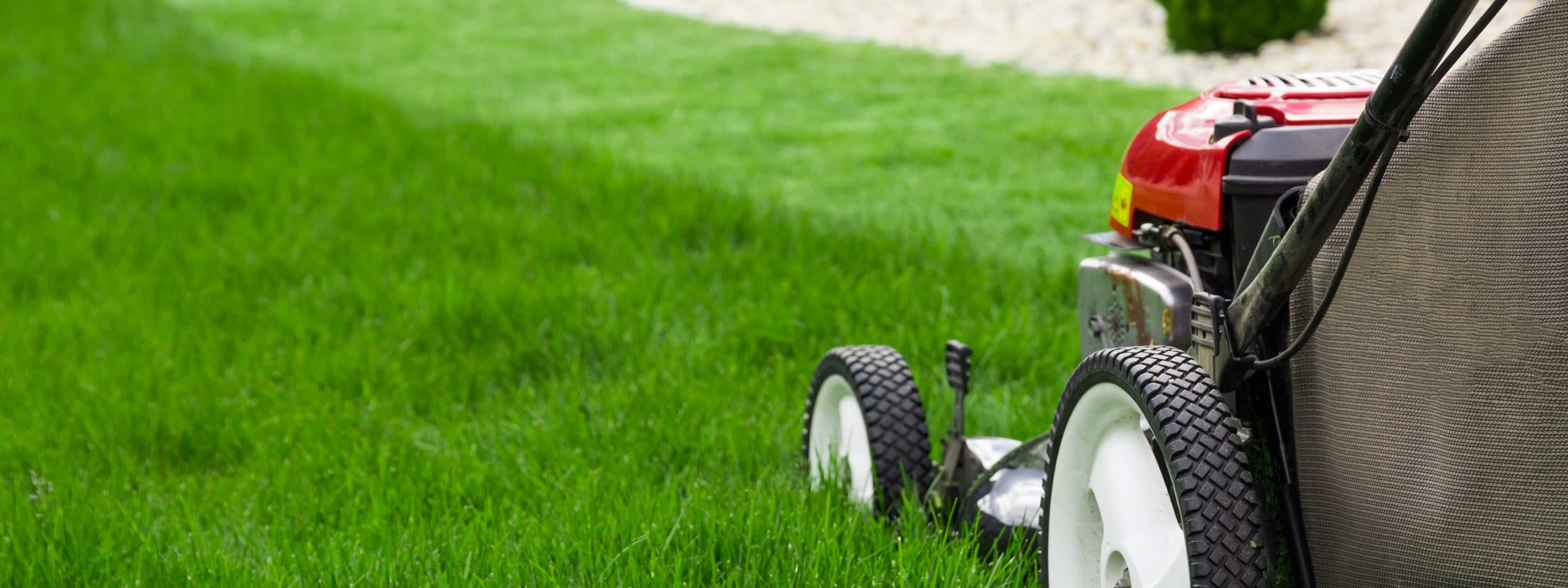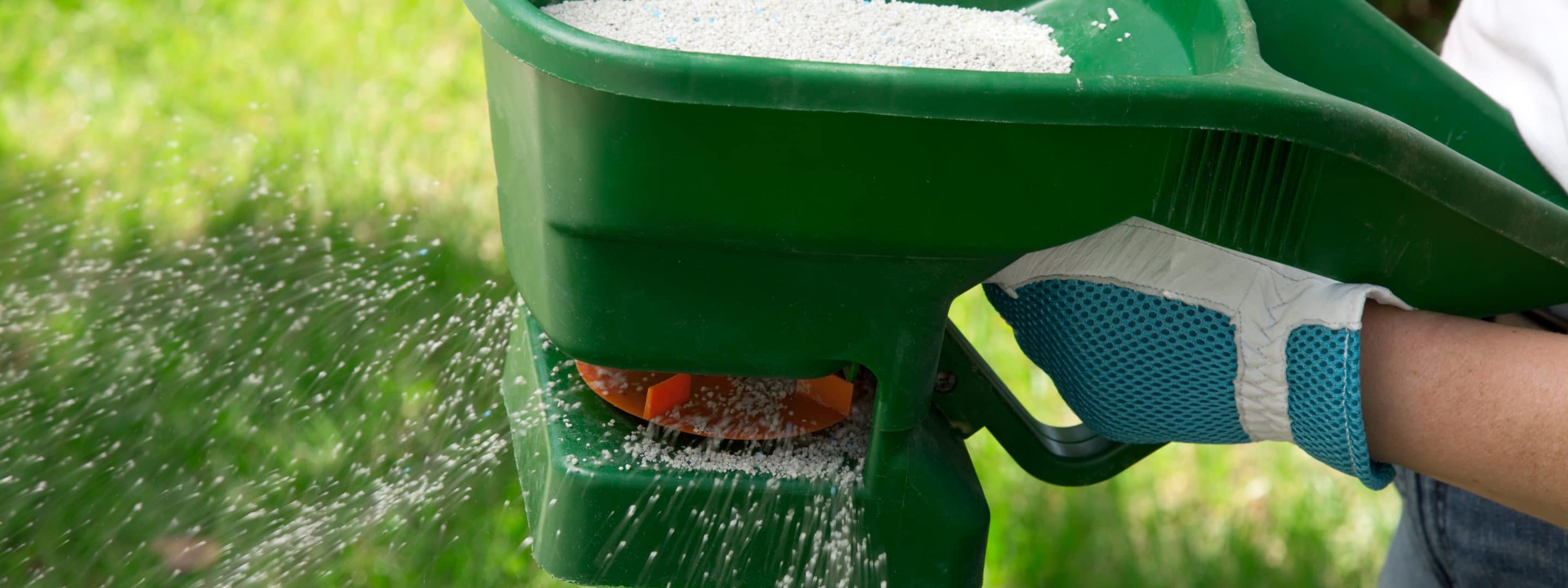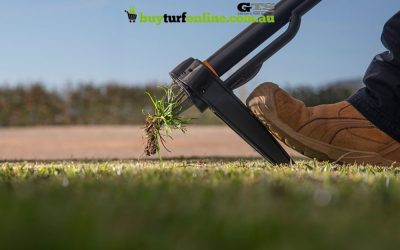Bring Your Lawn Back to Life with Spring Lawn Care
Bring your lawn back to life with spring lawn care
As spring sets in, your lawn will start to jump back to life. Now is the perfect time to help your lawn recover from the stresses of winter and to prepare it for the extreme heat of summer.
During the first few weeks of spring, lawn care is a balancing act. You need to be careful not to overwater your grass if it is still dormant but if you don’t water your lawn enough as it becomes active, it will start to brown.
Once your lawn is active again, it will start growing quite quickly. This is the perfect time for you to complete a couple of spring lawn care tasks to improve your lawn’s health for the year ahead.
However, before your lawn reaches its peak growth period, you should take the opportunity to tune up your mower. By maintaining your mower now, you’ll find mowing much easier in summer.
Watering & mowing your lawn in spring
With spring on the way, the weather will start warming up and once your soil warms up as well, your lawn will wake up from its semi-dormant state. As it wakes up, its needs will change, and you will have to change your watering and mowing patterns to match these.
However, the transitional period between winter and spring will not be easy for your lawn.
Over the next few weeks, you should keep a close eye on your lawn. If you water your lawn too much while it is still dormant, you could encourage lawn diseases.
Whereas if you don’t water your lawn enough as it wakes up, your lawn will start to brown. By watching your lawn as spring sets in, you will have a better idea of how often you need to water.
Spring is also a great time to start training your lawn to be drought tolerant through a careful watering routine.
By watering your lawn deeply and less frequently, you will encourage the lawn roots to grow deeper into your soil. With deeper roots, your lawn will have access to water reserves that shallow roots wouldn’t be able to reach in the heat of summer.
As spring is the peak time for lawn growth, you will find yourself mowing far more. Although it may be tempting to mow less often and to just chop off more leaf when you do mow, you need to remember the 1/3 rule for mowing.
By only removing a maximum of 1/3 of the grass blade in a single mow, you make sure that you don’t send your lawn into shock or scalp it.
Either one will require our lawn to spend time recovering rather than growing and preparing for summer.
Regular mowing throughout spring will also take care of any weeds that pop up as your soil warms up. By mowing the weeds in your lawn as well as your grass, you are giving your lawn the opportunity to naturally outcompete the weeds.

Maintain your mower before summer
Before spring sets in properly is the best time to pull your mower out of the shed and give it a bit of TLC. By maintaining your mower now, you can be sure it withstands the hard yards of spring and summer mowing.
While you have the opportunity, you should change the fuel, oil and spark plug as well as sharpen or replace the blades.
An added bonus of sharpening your mower blades is a crisper cut. A dull blade will tear at grass blades and leave a jagged effect whereas a sharp one with slice smoothly through the grass.
Test your soil
As much as you care for your lawn and tend to its needs, it will only receive the nutrients it needs if they are in the soil beneath. As part of your spring lawn care routine, you should perform a pH test on your soil.
For most lawn varieties, the optimum pH level is 6.5. If the pH level is higher or lower by more than 0.5 then you should treat your lawn.
If your soil is too acidic (below 6) then you should add lime or dolomite. However, if your soil is too alkaline (above 7), you should add sulphate.
Depending on your soil type, you will need to add different amounts of lime or sulphate to raise it one unit (Eg. From 5.5 to 6.5).
For lime, a sandy soil will need 150g per square metre whereas heavy clay soils will need 250g. For sulphate, a sandy soil will need 25g, 50g for a heavier loam and 100g per square metre for heavy clays.
Fertilise with a good spring fertiliser
Fertilising in spring is crucial for your lawn’s health. A good fertiliser will provide your lawn with the key nutrients it needs to bounce back after winter. With strong growth in spring, your lawn will outcompete weeds and prepare for the hot, dry summer to come.
When choosing a fertiliser for spring, you should consider a 20-5-10 mix. 20% nitrogen, 5% phosphate and 10% potassium. The rest of the mix is filler to assist with application and absorption. This will help your lawn with colour, stress and preventing the germination of weeds.
Remember to water in your fertiliser as soon as possible in order to avoid burning the grass blades.

Aerating your lawn
If your soil is compacted, you may need to aerate it and spring is the best time to do so. If you are going to aerate your lawn, you should wait until mid to late spring to be sure your lawn can cope with the stress aerating causes.
First, however, you need to determine if you should aerate at all. To check if your soil is compacted, plunge a long screwdriver into your soil in a few places. If it easily goes 100-150mm deep, then your soil is fine. If not, aerating will greatly improve the health of your soil. It will improve airflow and nutrient contents which will help strengthen your grass’s roots.
To easily aerate your lawn, you can use a pair of aeration sandals or your garden fork. However, if you have a larger lawn, a coring machine may be a better option.
Do you need to dethatch your lawn?
Thatch is a layer of dead organic matter, excessive roots and stems that has built up between your grass blades. If this layer gets too big, it can block air and nutrients from reaching the soil as well as hold onto water, causing fungal issues.
If your lawn feels spongey when you walk over it, that could be due to an overly dense thatch layer.
To remove thatch from your lawn, there are a couple of things you can do:
Mow low. You can gradually reduce the height of your lawn by mowing low a couple of times. Make sure to only take off 1/3 of the grass leaf each time but this will help to reduce your thatch layer.
Use a dethatching rake. This is one of the easiest and least invasive ways to remove thatch build up. By using the rake, you will remove some of the dead build up, but it may not be enough if your thatch layer is too big.
Hire a specialised dethatching machine. If you have a large lawn or especially thick thatch layer, a verticutter or power rake could be the answer.
Even out your ground by topdressing
Mid to late spring is also a great time to top dress your lawn. This will reduce any unevenness in the ground surface,
You should mow and fertilise your lawn before adding a layer of coarse river sand to your lawn. Ensure that you don’t full cover your grass leaves so that they are still able to grow through.
As well as evening out any patches in your ground, topdressing will also encourage further growth in time for the summer heat.

read more!
recent posts
Poolside Turf: Choosing and Maintaining Grass Around Pools
There’s nothing quite like stepping out of a swimming pool onto soft, lush grass. But when it comes to finding the best grass for around a pool, not all lawns are created equal. Chlorine pools, heavy foot traffic, and the unforgiving Australian sun can take a toll on...
Keeping Your Lawn Green and Healthy During the Summer Heat
Discover the best grass options for your lawn with our complete guide. Make informed choices for a lush, healthy yard. Read more to find your ideal grass!
Summer Lawn Weeds: Prevention and Management
Discover the best grass options for your lawn with our complete guide. Make informed choices for a lush, healthy yard. Read more to find your ideal grass!
The Ultimate Watering Guide for Summer Lawns
Discover the best grass options for your lawn with our complete guide. Make informed choices for a lush, healthy yard. Read more to find your ideal grass!




